- Home
- Articles
- Architectural Portfolio
- Architectral Presentation
- Inspirational Stories
- Architecture News
- Visualization
- BIM Industry
- Facade Design
- Parametric Design
- Career
- Landscape Architecture
- Construction
- Artificial Intelligence
- Sketching
- Design Softwares
- Diagrams
- Writing
- Architectural Tips
- Sustainability
- Courses
- Concept
- Technology
- History & Heritage
- Future of Architecture
- Guides & How-To
- Art & Culture
- Projects
- Interior Design
- Competitions
- Jobs
- Store
- Tools
- More
- Home
- Articles
- Architectural Portfolio
- Architectral Presentation
- Inspirational Stories
- Architecture News
- Visualization
- BIM Industry
- Facade Design
- Parametric Design
- Career
- Landscape Architecture
- Construction
- Artificial Intelligence
- Sketching
- Design Softwares
- Diagrams
- Writing
- Architectural Tips
- Sustainability
- Courses
- Concept
- Technology
- History & Heritage
- Future of Architecture
- Guides & How-To
- Art & Culture
- Projects
- Interior Design
- Competitions
- Jobs
- Store
- Tools
- More
How to Estimate Building Materials for Sustainable and Affordable Construction
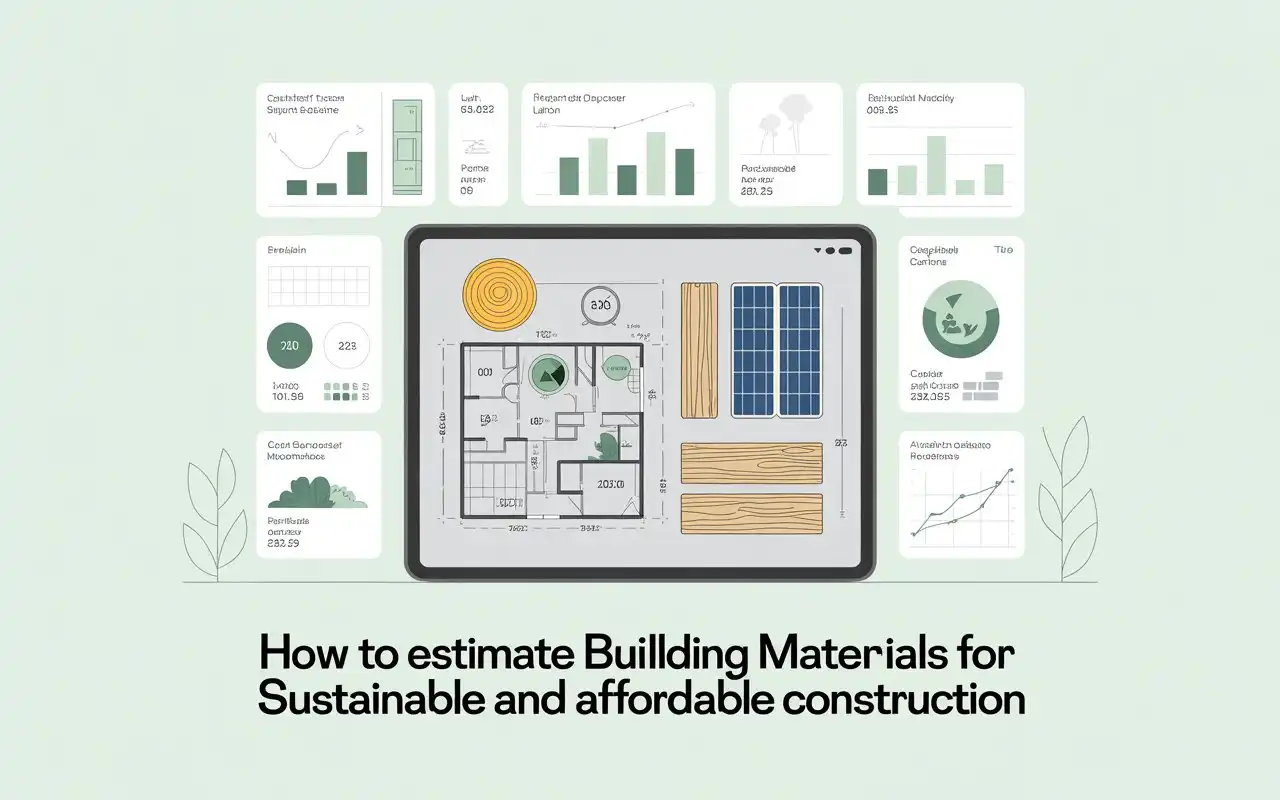
In building a house or starting any construction project, one of the smartest things you can do is plan and estimate your materials carefully. Exact and correct estimation of building materials is not just about saving money. It is also about decreasing waste and choosing sustainable materials that are better for the environment.
You can avoid buying too much or too little material with the correct estimation. This approach not only protects your budget but also supports sustainable construction that uses resources wisely.
In this guide, we’ll show you how to estimate building materials step by step, with real calculation examples for bricks, cement, and tiles. We’ll also share sustainable tips and cost-saving strategies that you can use for any construction project.
Table of Contents
ToggleWhat is Material Estimating?
Material estimating for building a house or any other construction project involves determining the type, quantity, and cost of materials needed for a project, and then presenting this information to stakeholders and clients. This process is closely related to quantity takeoffs.
It is an important step in project planning. This involves analyzing project plans, calculating material requirements, and estimating costs. This plan does not contain labor and other non-material expenses.
Step by Step Guide to Estimating Building Materials
Accurately estimating building materials can save you time and money. But if you don’t assess and plan properly, you might run out of supplies or buy too much. This can lead to wasted money or materials. To avoid this loss, below are 4 tips for making better estimate decisions.
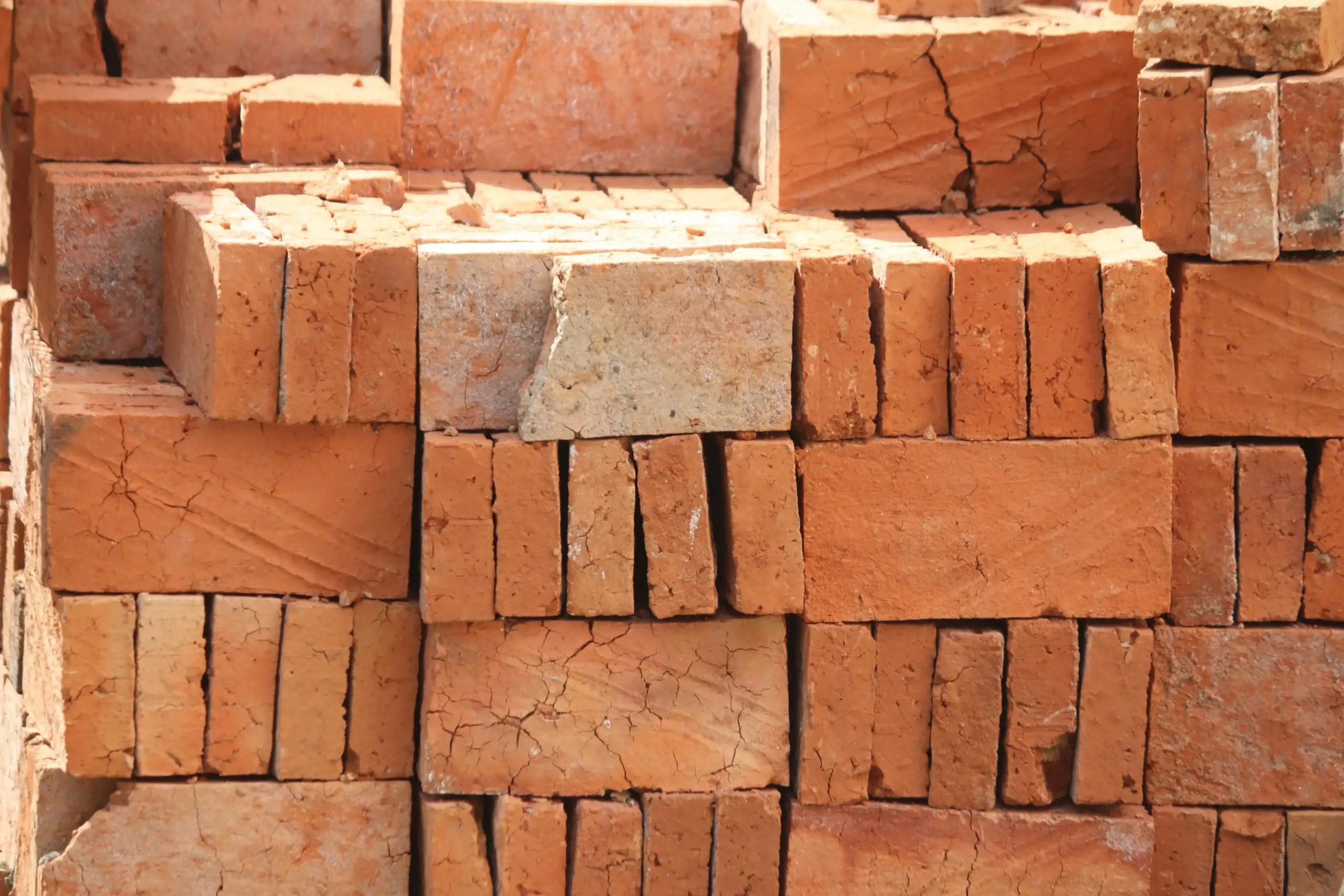
Make a List of Needed Items.
Before starting your project, make a list of all the needed items to avoid budget issues and delays. This list must have each item’s detail from the window to light switches because minor omissions can lead to cost overruns and schedule setbacks. Go through your blueprints room by room and note exactly where each component will be used.
Take Accurate Measurements
Accurate measurements are the backbone of a reliable estimate. Recheck every dimension (length, width, height). Then multiply these dimensions to get the exact measurement to estimate the material. You can use a quality tape, a laser tool, or a cubic feet calculator. It will help you calculate the correct area for materials like bricks.
Draw simple diagrams with labeled measurements before ordering, as many suppliers won’t accept returns for cut-to-size materials. For surfaces like flooring, paint, or concrete, calculate the total area and add about 10% extra for waste.
Draft your Timeline
Understanding when every stage of the project will happen makes it easier to order materials on time. For example:
If you’re remodeling a bathroom, then make sure the plumbing work is completed before installing the vanity or fixtures.
This avoids rework and wasted materials. Planning deliveries in sync with the work schedule prevents costly delays and storage issues.
Add an Error Margin
Always add a 10 to 15% margin for errors, breakage, or unexpected needs when planning a construction project. This safety margin keeps your budget complete and timeline moving if extra materials are needed.
It also prevents awkward situations where you have to explain additional costs to stakeholders mid-project. Let’s estimate the common construction materials to gain more understanding.
Common Sustainable Building Materials
Traditional construction materials like cement and steel have a big effect on the environment and climate change. Getting raw materials for these products often damages nature. It can destroy animal habitats, cause soil erosion, and pollute water resources.
Sustainable materials are environmentally safe and resourceful. These materials are used in construction to minimize the negative impact on the planet and human health.
Here are 5 common construction materials that help you make construction sustainable and protect the environment.
- Rammed Earth:
Rammed earth is an ancient building method used for thousands of years. It is made by packing a mix of gravel, clay, and sand tightly into a mound or frame. This technique is environmentally safe because it uses materials found locally and can often be reused onsite or broken down for fill material.
Rammed-earth walls also have high thermal mass. It means they absorb and store heat well, which helps keep buildings comfortable and lowers energy costs.
How to Estimate Costs of Rammed Earth:
- Calculate the wall volume (length × height × thickness).
- Multiply by your local contractor’s price per cubic meter.
- Add about 5% for formwork adjustments and site variations.
Example:
For a wall 5 m long × 3 m high × 0.3 m thick:
Volume = 5 × 3 × 0.3 = 4.5 m³.
If the rate is $55/m³:
Cost = 4.5 × $55 = $247.50 (plus $12.38 for 5% contingency = $259.88 total).
- Bamboo
Bamboo is the most sustainable among construction materials. It achieves full growth in only 3 to 5 years. Many building projects benefit from its strength. It finds use in flooring, wall panels, scaffolding, roofing, reinforcing concrete, and other structural elements.
Unlike most trees, bamboo absorbs more carbon dioxide and grows considerably faster. It dramatically lowers the environmental impact. For sustainable construction and a significant material in the direction of green building, these characteristics make it a great option.
How to Estimate Costs:
- Measure the required length and diameter of bamboo poles or panels.
- Convert your measurements into the unit your supplier uses (per meter, piece, or square meter).
- Multiply the price per unit and add 5–10% extra for trimming and fitting.
Example:
You need 20 bamboo poles. Each is 4m long, and the supplier charges $3 per meter. Find the total cost.
Solution
Cost = 20 × 4 × $3 = $240 (plus $24 for 10% waste = $264 total)
- Recycled Steel
Recycled steel is a strong material that can be reused endlessly without losing its quality. It is widely used in structural work and plays a key role in cutting down carbon. Its emissions are linked to making new steel.
How to Estimate Costs:
- Calculate your concrete volume in cubic meters.
- Multiply by a reinforcement rate (e.g., 90 kg/m³ for slabs).
- Multiply the total weight by the market price per kg or ton.
- Add 2–3% for overlaps and fabrication losses.
Example:
Find the need for steel for a 3.6 m³ concrete slab.
Solution
Steel needed = 3.6 × 90 = 324 kg.
If steel costs $0.80/kg:
Cost = 324 × $0.80 = $259.20 (plus ~$7.78 for 3% waste = $266.98 total).
- Reclaimed Wood
Reclaimed wood is timber that has been taken from old buildings, barns, furniture, or other wooden structures. It can be reused for new projects instead of being thrown away.
It’s popular in construction and furniture making because it’s strong and has a unique character from its age and history. It also reduces the need to cut down new trees. This process makes it an environmentally friendly choice.
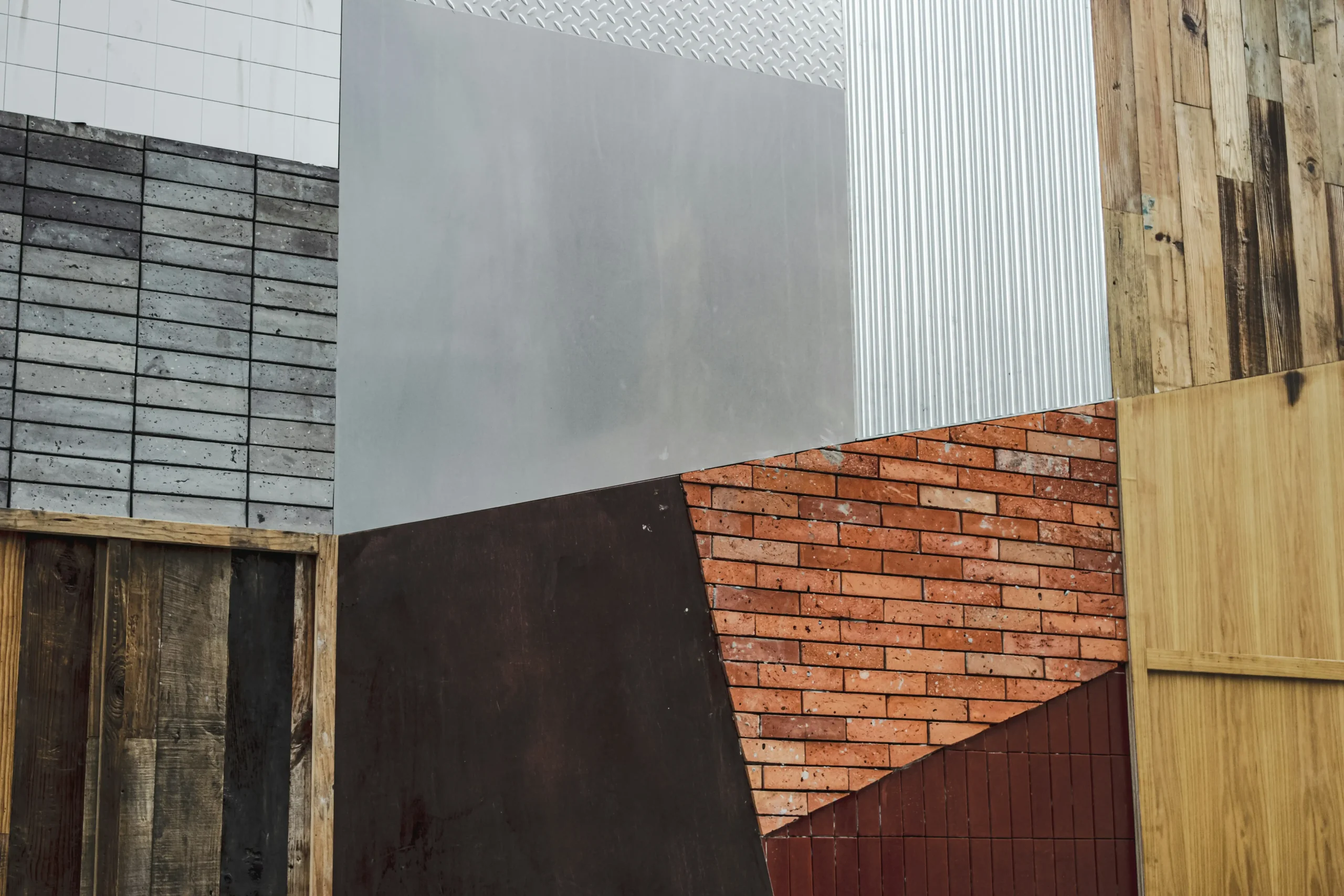
How to Estimate Costs:
- Measure the total area (flooring/paneling) or volume (beams/frames).
- Convert to your supplier’s pricing unit.
- Add 5–7% for cutting and imperfections.
Example:
You need 15 m² of reclaimed wood flooring, and your supplier charges $20/m². Find the total cost.
Cost = 15 × $20 = $300 (plus $18 for 6% waste = $318 total).
- Recycled Concrete Aggregate
Recycled Concrete Aggregate is produced from crushed fragments of demolished buildings, roads, or other infrastructures using old concrete. Thus, it is able to be recycled in fresh building projects.
Often combined into fresh concrete or utilized as a foundation, road, or paving base material. RCA helps to cut building waste, conserve gravel and stone, and minimize the ecological footprint of building projects.
How to Estimate Costs:
- Measure the volume of concrete needed.
- To calculate volume, you can multiply each dimension by the other. Or use the online cubic feet calculator to quickly get volume in ft³ or m³.
- Multiply the volume by the cost per unit from your supplier.
- Add 5–10% for site waste and uneven surfaces.
Example:
You need a driveway slab measuring 20 ft in length, 10 ft in width, and 1 ft in thickness. Calculate the total volume.
Solution
- Volume = 20 × 10 × 1= 200 ft³ → ≈ 5.66331587m³. (You can recheck through the cubic feet calculator)
- If RCA costs $45/m³:
- Cost = 5.663 × $45 = $254.835 (plus $12.741 for 5% waste = $267.576 total).
Conclusion
For safe and affordable building, accurate material estimation is essential. This estimate also helps to preserve the environment. It minimizes waste and avoids unwanted costs. The project runs smoothly with careful planning with accurate measurements, and a little tolerance.
Reclaimed wood and sustainable choices help to create a greener planet and save expenses over time. Correct preparation allows you to create robust buildings at low cost while remaining environmentally conscious.
illustrarch is your daily dose of architecture. Leading community designed for all lovers of illustration and #drawing.
Submit your architectural projects
Follow these steps for submission your project. Submission FormLatest Posts
Understanding Site Safety Footwear in Architectural Practice
Architecture is often discussed through drawings, models, and finished buildings, yet a...
General Arrangement Drawings in Architecture: The Backbone of Clear Design Communication
General Arrangement Drawings explained: what they are, when to use them, how...
The Ultimate Guide to Fencing in North Dakota: Choosing the Best Fence for Your Property
Watching a chain link fence twist in 70 mph winds near Minot...
Gaudí: Where Architecture Meets Science
Gaudí: Where Architecture Meets Science shows catenary arches, ruled surfaces, and biomimicry...




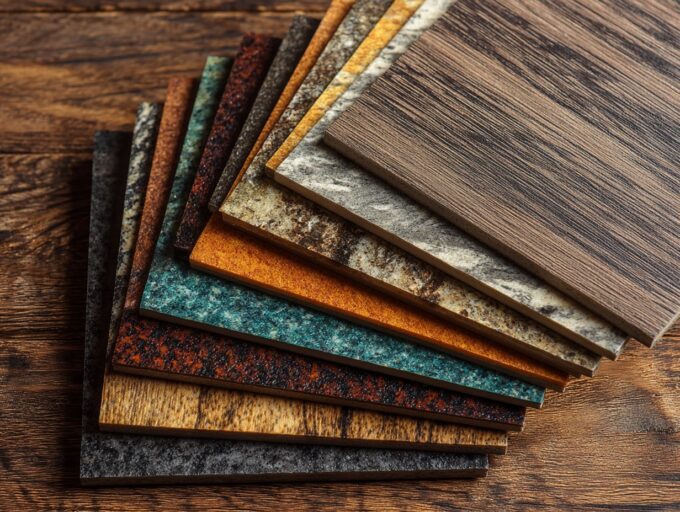


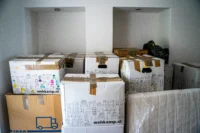
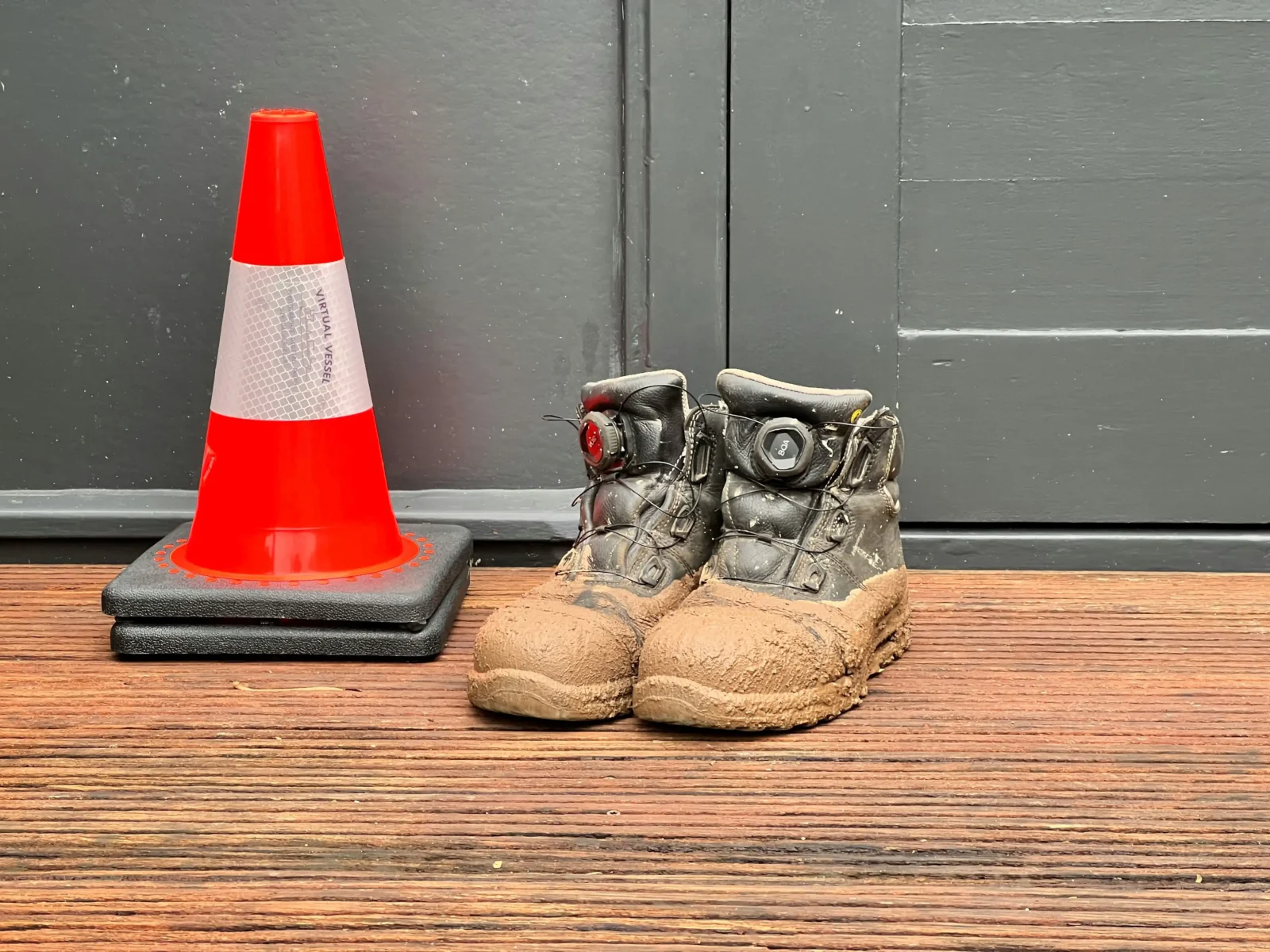



Leave a comment